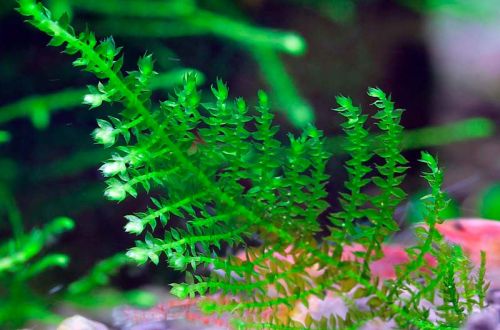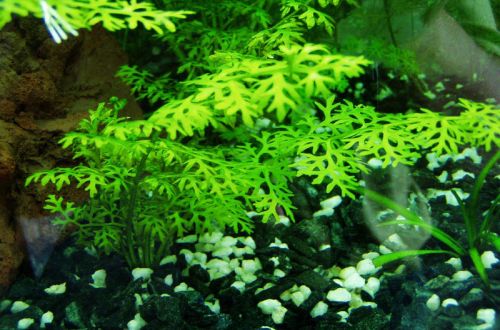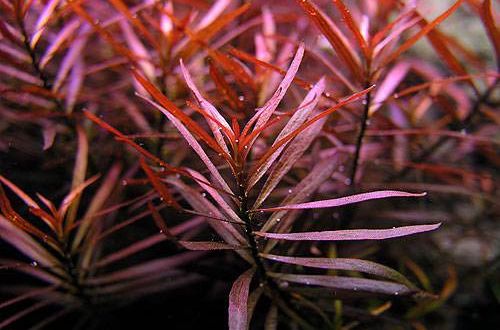
Atsiotis
Aciotis, scientific name Aciotis acuminifolia, belongs to the melastomes family. Began to be used in aquarism since 2005 in the USA. The first shipments of this plant were shipped from San Francisco and were known for a long time as “Sao Francisco Irecienu”. In 2009, as a result of additional research, this species was assigned to the genus Aciotis and received its name, by which it is known today. It turned out that Aziotis is widespread in the tropical part of South America and has 13 more related species.
The plant grows vertically upwards, the leaves are located directly on the stem crosswise in pairs, the veins stretch in parallel. The leaves are colored green, yellow or reddish, with the lower part of the leaves always red. Coloring depends on the degree of illumination, the higher the intensity, the more red. Young leaves are bent “boat”, but as they grow straighten.
Roots in soft substrates, fully submerged Aziotis needs soft slightly acidic water and a high level of illumination. The introduction of additional CO2 is recommended. When grown in unsuitable water conditions, the leaves will change shape, becoming narrow and may curl into a tube. With a lack of lighting, growth slows down or stops altogether. The combination of all negative factors leads to the death of the plant. In favorable conditions, the plant has a moderate growth rate and produces many side shoots that can be safely cut and planted. As with other stemmed plants, cutting off the upper part provokes increased growth of side shoots on the remaining lower part.
Can grow out of water and be used in paludariums. As long as the air humidity is high, nothing threatens the plant, and it can produce flowers. The inflorescences are composed of four





